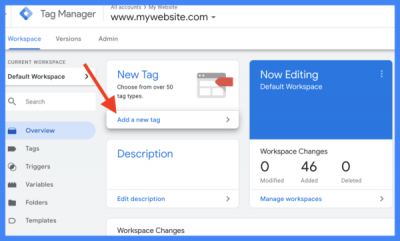Working remotely is one of the greatest challenges that a company can face, but it can also be a great opportunity for the company and the employees. As the traditional office space becomes a thing of the past, aided by the recent spread of COVID-19, more businesses are trying to adjust to remote work than ever before. Depending on what industry your company is in, this will either be a seamless transition or a very difficult one. How does a remote team operate? Below, we go into detail on what to expect as your team begins to work from home.
Expert Marketing Blog - Page 26
Automated marketing tools have evolved over the last few decades, giving generations of marketers new and innovative ways to engage with their customers. That’s not going to stop anytime soon. Automated marketing technology continues to advance rapidly. And over the next few years, it’ll change the way people experience your brand and interact with your company.
I think we are entering the age of the customer experience platform.
Everyone in the professional world has email. For many companies, it’s their primary avenue of communication. Marketers have been using email marketing campaigns for years, pushing products, events, and anything else they want their audience to engage with. If the majority of people are checking their email every day (most are checking multiple times a day), why aren’t your campaigns working? While it might seem that email marketing as a whole just doesn’t work, but it might just be that your processes are out of date. Engaging with your audience is like a game of chess: it requires a lot of strategy and planning, as well as the flexibility to adapt your approach when things don’t work. Below, we have 5 email marketing practices that don’t work anymore.
As a marketing professional, you often think about creating an emotional connection with your audience. And for good reason. Emotion can direct attention, deepen engagement and drive behavior. But can you articulate how your marketing assets trigger emotional responses?
The effects of the coronavirus panic go far beyond the physical worry and anxiety that people are experiencing. While COVID-19 is certainly a potential health hazard looming on the horizon, it’s currently already affecting the workplace. Companies all over the country are trying to think of creative new ways to address the pandemic scare. Multiple events and conferences have already been canceled to prevent a further spread of coronavirus. Companies are already having to backpedal major promotional events, which could result in a massive hit to the companies sponsoring and attending these annual conferences. How can we address the concerns of our employees, while still continuing to operate as usual?
Implementing a live video experience for your brand is an incredible opportunity to bring your audience together. Whether you are filming product demonstrations or a roundtable interview, your audience can use your live broadcast as an opportunity to stay informed on what your business is doing. There are plenty of platforms available to produce your live broadcast, so it’s easier than ever for companies to do this. Below, we have a few pointers for businesses to consider before implementing a live video experience.
Google Analytics is a crucial part of any online marketer’s toolbox.
Source: Marketing Land
“At this point, what isn’t digital?” said Jennifer Fey, the senior vice president of digital media for Firewood when asked how her global digital marketing agency works with clients undergoing digital transformation. “It’s easy to be glib about this, but really, everything we touch that may seem like an ‘old school program’ or be structured as ‘offline’ still has a digital component.”
(Source: Followed App)
Most Google My Business Scheduler tools will offer a bunch of other really useful features alongside creating and scheduling of posts.
Google My Business has gained some serious popularity among big businesses and social media marketers in the past few years and it looks like small businesses are catching up really fast as well.
Google My Business, in a nutshell, is a free SEO tool offered by Google that helps you get your business registered and discoverable in local search results and Google Maps. You can also manage how people will view your business.
You can add your business name, location, working hours, contact number, website address, and even link your Google Play Store app if you have one. Google My Business uses all of this info to make it super easy for potential customers to find your business.
Every company needs a marketing strategy to plan for the future. A strategy works as a sort of road map for all of your marketing activations throughout time. But what exactly goes into these strategies? For a lot of companies 2020, automation and personalization of content is going to be the next big step in marketing tactics. Trends change every year, and companies need to understand the next big step. We reached out to a few friends to weigh in on what every marketing strategy needs in 2020.
There’s a point in the sales funnel where the prospect is handed off to the next team member. Specifically, this is the point of the funnel where the marketing hands off prospects to sales and sales pass prospects to an account executive. The middle of the funnel is like a valve. At this point, you can expand lead quality definitions to pass a higher volume of leads to your sales team, or even tighten the definitions to give them a more specific segment of qualified leads. In the middle of the funnel, marketing facilitates the hand-off to sales. For this hand-off, content is created to engage and educate leads to identify who is interested in making a purchase. This part of the funnel has the biggest potential for marketing and sales to not completely align, so it requires the most attention. Below, we have some tips for how to prevent leads from going cold in the middle of the funnel.
Staying relevant in your industry is harder than ever. Every industry is overly saturated with companies fighting for the attention of their audience. Each company has its own way to provide value, and it can be really difficult to convince your customers that you provide a more valuable product than your competition. For this reason, you need to be able to set yourself apart from the rest of the pack to survive. Search engine optimisation is a great strategy to not only maximise the visits to your website, but it can also keep your efforts relevant and competitive in a saturated market. Below, we have some of the ways that search engine optimization can benefit the marketing performance of your business.
One of the big reasons why marketers love Facebook Audience Insights is its ability to connect with super-specific groups of people. Since Facebook has such a gigantic user-base (around 2.45 billion in 2019), the tool has no trouble finding the right people for your business.
Social media marketing is at an all-time high and it seems like everywhere you look these days, brands are trying to grab your attention. They’ve gotten quite good at it too.
So how can someone like you and I stay in the game and maybe even ahead of it?
Well, like most difficult things, you first have to get your basics right. Social media marketing is all about making the right offer to the right people at the right time. How you manage to do all that determines whether or not you’ll achieve your goals.
Instagram marketing is the way that brands use Instagram to connect with their target audiences and market their offerings. Recently, it’s gained popularity as an exciting method for brands to show off their cultures, recruit new employees, engage with customers, and show off products in a new light.
















